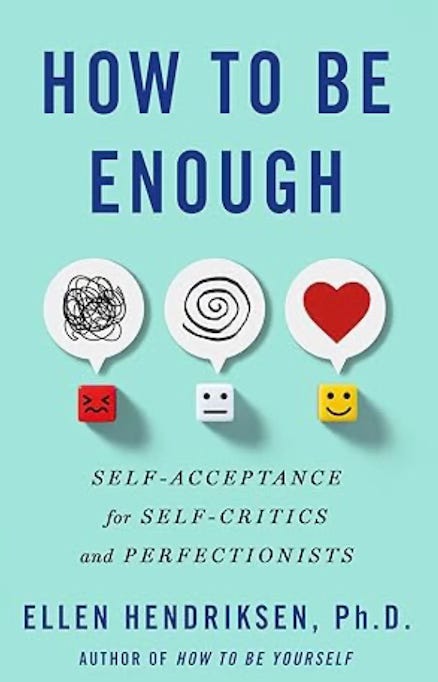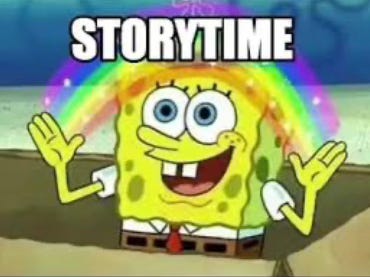Why do I feel awkward in groups—even with people I love?
Four ways to feel better when all the eyes are on you
Lisa on Amazon says this about How to Be Enough: “This book is everything you need if you're feeling insecure about any aspect of your life. She has SO many nuggets of ideas and tricks to do to overcome the negativity that creeps into your mind. The real life stories she talks about are relatable and many of her suggestions are things I've never heard before...and they work!”
Hi everyone!
If Dan Harris sent you from Ten Percent Happier—welcome! I’m so glad you’re here. This cozy corner of the internet is for those of us who care deeply and think a little too much, in the best way.
This week, a dear reader named Jenn wrote in with a great question. Here is her story in her own words, lightly edited for length and clarity:
I have four friends that I love dearly. I am comfortable and open with each of them when it's one on one... but when we all get together for girls’ night out, I clam up and feel shy.
I'll say quick comments or ask them questions, but sooner or later they want a life update and they'll start asking me questions to draw me out. My brain freaks out when all the attention is on me and I blush and get awkward.
I don't like this and it doesn't even make sense to me. It's like the group takes on a life of its own that makes me uncomfortable. But these are my friends!
What can I do (or think) to feel more at ease when we're all together? I love these people and I want to be myself with them.
Yes! Jenn’s situation is common and relatable. Groups do take on a life of their own. Therefore, here are four ways to navigate the transition from one-on-one to group dynamics:
Radically accept that groups are different than one-on-one.
Compare a meeting with one colleague versus the Monday team meeting, or visiting your sister versus a big family gathering. It goes from playing catch to nine innings of baseball.
In groups, we have to follow and respond to multiple people’s words, emotions, and interpersonal dynamics, not to mention interruptions and side convos. There’s a greater load on our cognitive capacity, social battery, and emotional bandwidth.
But that means when a group is harder to navigate than individual interactions, you’re not awkward; group dynamics are awkward! Your feelings are an accurate reflection of a very real difference.
Practice both acceptance and change to deal with everyone turning to look at you.
Oh, the dreaded simultaneous eye swivels! Whether it's our turn for “life update” at girls’ night out, we have to speak in a meeting at work, or our teacher asks a question of the class but looks directly at us, all the eyes turn towards us when it’s our turn to talk. We feel a shot of adrenaline and, as Jenn says, “that's when I shrivel up inside.” Luckily, we can use both acceptance and change to help with this.
First up, acceptance: part of self-acceptance is expecting that your anxiety spikes when multiple pairs of eyes swivel towards you; it’s just what happens. Chalk it up to evolution, genetics, wiring, whatever: it’s a fact rather than a shortcoming.
However, we can radically accept that “this is what happens” while simultaneously working for change.
Therefore, practice the eye swivels. At the clinic I work at, we gather a few colleagues or grad students in a conference room to help clients practice being on the receiving end of the swivels: “one, two, three: now.” If your therapist is part of a group practice, ask them to set up a similar session. Or, ask 1-3 trusted friends, colleagues, or family members to help you out while you’re all sitting around a table. It is heart-stopping at first, but desensitizes significantly. It probably won’t get to zero (remember: radical acceptance), but that’s okay—cutting it by 30-50% makes a difference.
For work presentations, you can practice virtually. If workplace ethics allow, record a gallery view of a Zoom team meeting and play it while you practice your next presentation. Alternatively, search online for “bored audience stock video” or “fake audience looking at you.”
Remember you don’t have to answer the question literally.
As conscientious people, we are wired to answer the question posed to us. For me, sometimes a casual “So what’s going on with you?” can feel like an expectation to offer a neat thumbnail sketch of my life, or to dutifully check the boxes with a brief report on Work, Family, Other. Don’t even get me started on “conversation starters” like “If you could take one thing to a desert island, what would it be?” which I hate with the fire of a thousand suns. Regardless, questions can make you feel like you have to file a report.
But you don’t have to answer questions literally, completely, or directly. Instead, you can tell a story. You can riff on what someone else just said. You can ask for advice on an issue you’ve been dealing with. You can spin a “listen to this craziness” yarn. In other words, don’t focus on what you think others want to hear; instead, talk about what you’re jazzed to share.
Let’s bring it home with the big one:
Lean into social connection versus social performance.
Let’s define the two. Social performance is behavioral. It focuses on external actions: doing and saying things correctly to meet social standards and expectations, and avoiding mistakes that might draw criticism or judgment.
Social connection, on the other hand, is relational and emotional. It focuses on the relationships between us: knowing, trusting, accepting, and supporting each other through experiences shared both directly and verbally.
Believe me, I totally get how having all the eyes on you can feel like you’re performing. But experiment with shifting the spotlight off your performance (“Am I boring them?” “Did I say that weirdly?”) and onto the heart of what you’re saying—what excites you, puzzles you, or moves you. It doesn’t have to be 100%. Even 51% will do.
This can also work for situations that are more performance-like: work presentations, job interviews, literally any form of teaching. Again, rather than focusing on how well you’re doing or how you’re coming across, focus on sharing your message.
To wrap it up, if you, like Jenn, go quiet in groups—even groups of people you genuinely like—you’re in good company and you’re not doing anything wrong. And when all the eyes swivel your way, remember it’s not a spotlight, interrogation, or expectation—it’s an invitation to show up as you are, not as you think you should be.
Be kind to others and yourself!
Reviews aren’t just stars or words—they’re a signal to friendly potential readers. If How to Be Enough made you feel seen, understood, or equipped, please write an honest review wherever you hang out online. I’m aiming for 25 more reviews on Amazon!











This is so fantastic! It not only explains why I'm uncomfortable in friend groups, but also why I can not make myself turn my camera on in work Zoom meetings, and why I hate family reunions with the fire of a thousand suns 🙂.
"I'm not awkward. Group dynamics are awkward" is my new mantra.
And "It's a fact rather than a shortcoming" had me all emotional. I guess I haven't grown out of needing to be told I'm not broken. Maybe we never do.
Thanks for helping out the Jen(n)s of the world, Ellen ❤️
I struggle with this same thing so much. Thank you to Jenn for sharing my experience and to Ellen for the great advice!